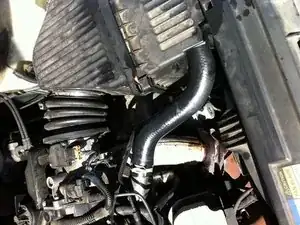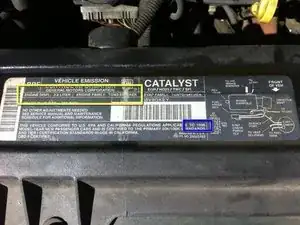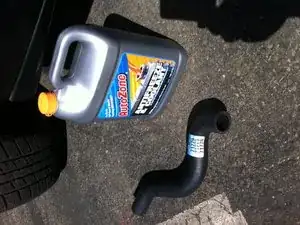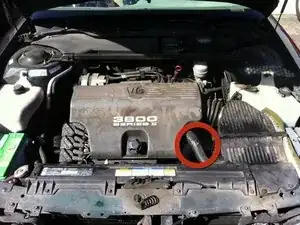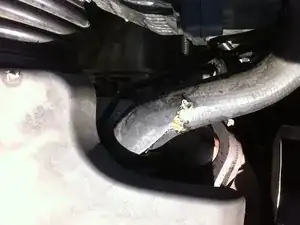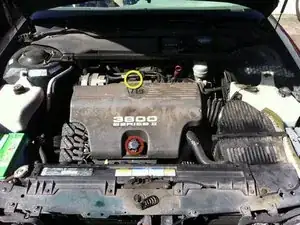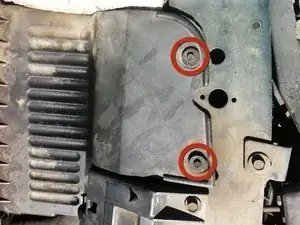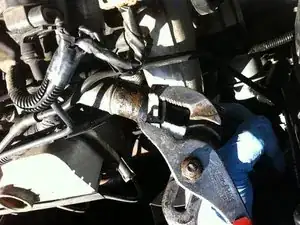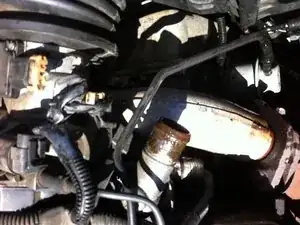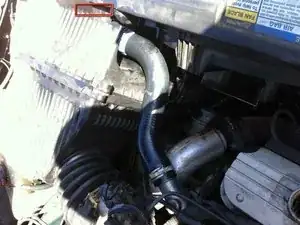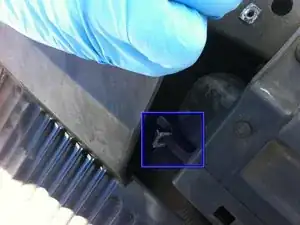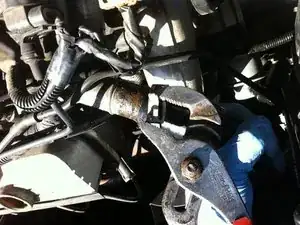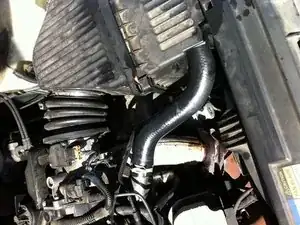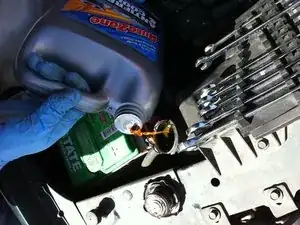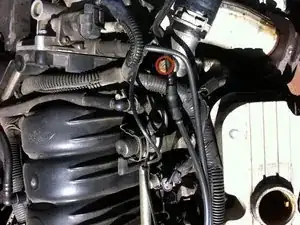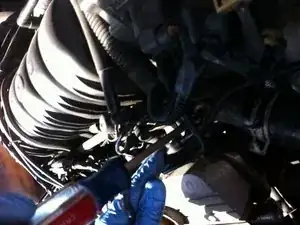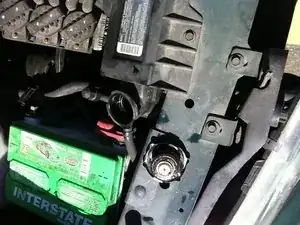Introduction
These hoses can wear out over time and can develop holes or can rupture spewing coolant everywhere. It's an easy fix yourself and can save you lots of money.
Tools
Parts
-
-
In order to make sure you get the right part, make sure you know the year and the engine you have. This can be found under the hood on the Vehicle Emission information sticker.
-
The model year
-
Engine size and family/type.
-
You will also want to buy coolant to refill your system.
-
-
-
Here you can see the upper radiator hose which we are going to replace.
-
You can see in more detail that this hose has a large gash in it where pressure build up and old age caused it to fail thus rupturing.
-
-
-
The first thing you need to do is remove the plastic engine cover.
-
Remove the oil cap and cover
-
Unclip the plastic cover in the back
-
You should now be able to take the cover off.
-
-
-
Using pair of channel locks or large pliers, pinch together and pull back the hose clamp securing the hose to the coolant intake.
-
-
-
Pull back on the air filter case in order to expose the other end of the hose, hidden underneath the front edge of the air cleaner assembly.
-
Use the channel locks again to remove the clamp securing the hose to the radiator.
-
-
-
Take your new hose and secure it into place with the hose clamps from your old hose.
-
Congratulations! You have installed your new upper radiator hose!
-
-
-
Now you have to fill up the system with coolant since you have probably lost some already.
-
Top off the coolant by pouring it directly into the radiator, then replace the radiator cap. A funnel is recommended to avoid spilling coolant.
-
Top off your coolant reservoir at this point also.
-
-
-
Turn your car on and let it warm up for about 5-10 minutes. You want to wait until your thermostat opens, and allows coolant to circulate through your system.
-
There is a bleeder valve that allows air to escape so not to be trapped in a high spot in the cooling system above the thermostat. Loosing this slightly will allow the air to bleed out of the system. You can re-close it as soon as you see coolant leaking from it.
-
After it is cool, top off the coolant again by filling up the radiator and checking the coolant reservoir. Keep an eye open for leaks and check your coolant reservoir occasionally over the next couple days.
-
You are done!
-
You are good to go!
